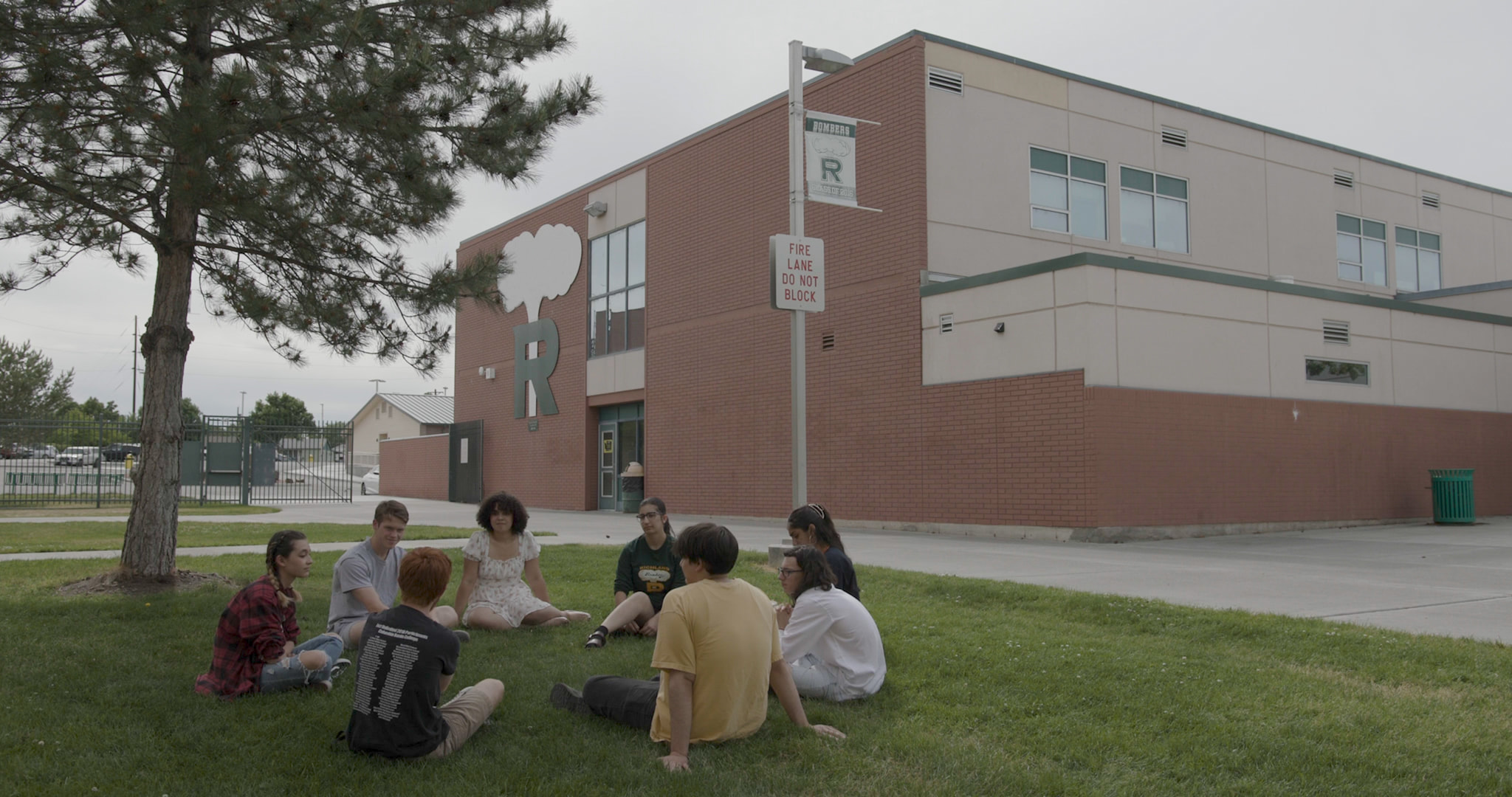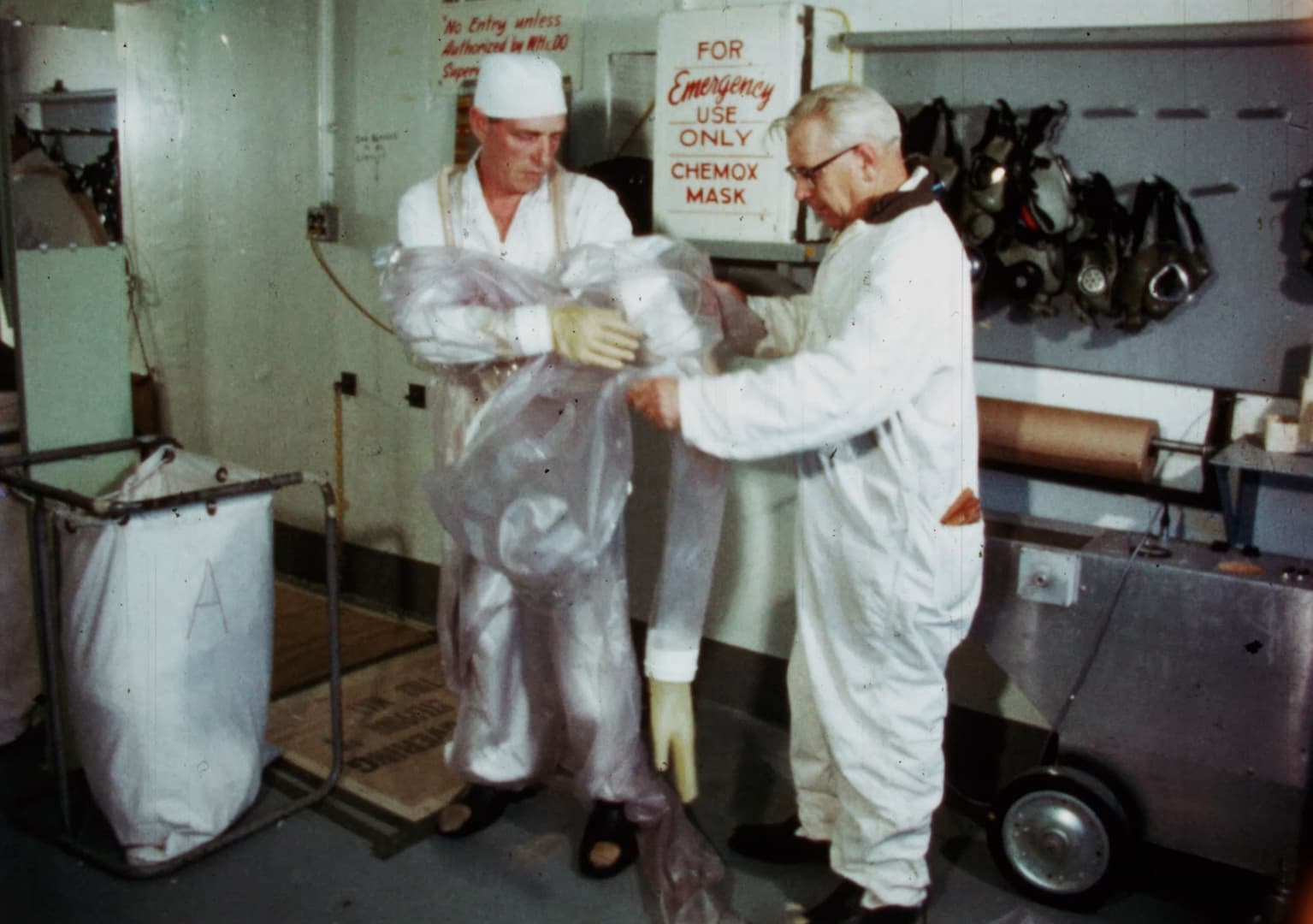On March 28, 2024, the University of Toronto welcomed Irene Lusztig, who engaged in conversation with students and faculty after the screening of her latest film RICHLAND. Irene Lusztig is a visual thinker who is constantly creating and putting pieces together; from the construction of tangible objects, like the dress she wore during our interview, to enabling learning spaces at UC Santa Cruz. In the realm of storytelling and film, she weaves narratives firmly rooted in feminist commitments, which are centered on creating “generous listening spaces with people.” Yet, she did not always call herself a feminist filmmaker. During her college years in the 1990s, she discovered her passion for documentary filmmaking. During a time when YouTube and content creation were not part of the collective imagination, Lusztig embarked on a career path that allowed her to learn how to “make all parts of the film.” It was there, in the meticulous crafting of films, that she learned to do it all —shooting, editing, and directing— embracing a hands-on approach that is a hallmark of her filmography. By being in contact with documentary filmmaking she realized that movies could be a medium in which “there could be research, there could be language, there could be historical thinking.”
However, during those years, her inclination towards ethics and a feminist perspective were initially dismissed as detrimental to her career: “I can say now, in retrospect, that the parts of myself that really were kind of reaching for a feminist film practice were often the things that I was told as a young person were bad things about my work.” She remembers a teacher who could not see the value in her focus on ethics, viewing it as a hindrance rather than a strength. He said to Lusztig that she “thought so much about ethics” and that this was holding her back from “manifesting [her] vision as a filmmaker.” Her own interest and individual commitment propelled her forward, leading her to self-educate and explore the feminist works of the seventies which showed her perspectives she did not find in the curriculum.
In her twenties, she made her first feature film: Reconstruction, about a bank heist committed in Romania in 1959 in which her grandmother participated. This project led her into the depths of the Romanian National Archive, where she found a propaganda film featuring her grandmother re-enacting the bank robbery. Lusztig knew the film existed, but it was not easily accessible, and she invested a lot of time looking for the footage while looking at all types of sources housed in the archive. Through this work, she realized that archival materials could hold multiple layers of meaning —they could be historical documents, personal stories, and emotional relics all at once. Since then, primary sources, memory, politics, history, and the paths carved by her own creative process have been part of her films.
The first time Lusztig visited Richland, Washington, she was going through the process of making Yours in Sisterhood, a film in which hundreds of people across 32 states in the U.S. were invited to react to letters penned in the 70s, addressed to the editor of Ms. Magazine - the pioneering feminist publication in the United States. She was in Richland just for 24 hours, but she immediately noticed the nuclear pride culture all over the community: “mushroom clouds everywhere, and restaurants with nuclear names […] it felt very clear to me that there was something kind of interesting and unresolved and complicated about this community's relationship to its history.” Against the backdrop of the beginning of the campaign that led to Donald Trump’s election, “right-wing nationalist voices in American politics were much louder,” and Lusztig identified the political urgency of listening: “I was really starting to think about what forms and shapes conservative ideologies [can take]. Why, they're coming back with such force at this moment, what is happening in white working-class communities?” She considered applying a feminist listening approach, which she had previously used, but this time in a more challenging context. Intrigued by the idea of creating a generous listening space within a community whose politics might differ from her own, she started this project wondering if the nuclear industry might foster a conservative worldview.

While it is true the film is about nuclear history, the Manhattan Project, and nuclear weapons, the core of the project relates to the multiple meanings “of living alongside a history that is violent” and, as Lusztig highlights, this is “a very universal question, it is not a question about Richland, but definitely about the U.S.” For a creator like her, the final stage of a film is not when it is projected on the screen, but it is the contact with audiences, and being part of and witnessing the conversations a film prompts. Bringing RICHLAND to its namesake city marked a profound moment in the journey of the documentary, underscoring a dynamic interaction between the film and the community it portrays. This screening held a unique significance, diverging from the film's premiere in New York, a city known for its large film festivals and heterogeneous audiences.
Richland, with its origins as a "secret city" in the 1940s, has developed a deeply insular culture, marked by a strong sense of pride and a keen sensitivity to external perceptions, especially concerning its nuclear legacy. From the beginning, the director had the intention of portraying the community respectfully in the film, but she was not sure about how it would be received. Favourably, the conversation transcended mere commentary on the documentary, and Richland residents stayed long after the film ended, engaging in heartfelt discussions about their personal experiences and the collective memory of their community. The film fostered a space for reflection and conversation that might not have otherwise occurred, highlighting the power of storytelling in facilitating a shared exploration of identity and history.

Films are always an invitation for reflection, and some of the creators' decisions have a clear purpose. Lusztig decided not to depict the iconic mushroom cloud in this documentary, because for her “it felt more interesting not to think of the atomic bomb as this one big spectacular visual event, but actually to think of it as a kind of distributed violence.” This approach encourages a deeper reflection on the continuous violence and its effects that ripple through generations. This perspective offers a more nuanced understanding of history, emphasizing the importance of recognizing the diverse, interconnected ways in which many individuals and communities are part of historical events, instead of focusing on a few men and their inventions. Blockbuster movies such as Oppenheimer often spark widespread discussions about nuclear history presenting a narrative through the lens of remarkable individuals achieving extraordinary feats. However, Lusztig challenges this perspective with her cinematic work, drawing attention to a different view of history. She is “much more interested in the everyday history of live experiences, and all of the different ways that many people are participating in history.”
--
Professor Mark Solovey organized the film screening and Q&A of RICHLAND. The event was co-sponsored by the Institute for the History & Philosophy of Science & Technology (IHPST), Victoria College, the Centre for the Study of the United States (CSUS), the Department of Anthropology, the Cinema Studies Institute, and the Department of History.


